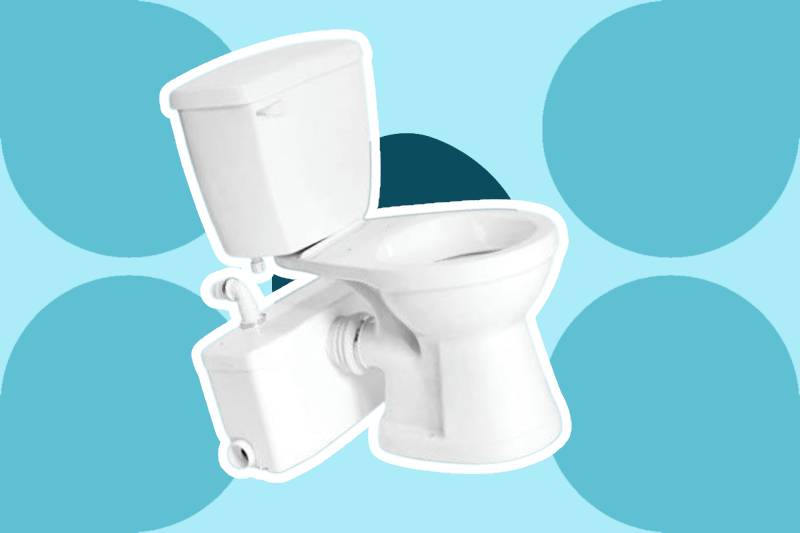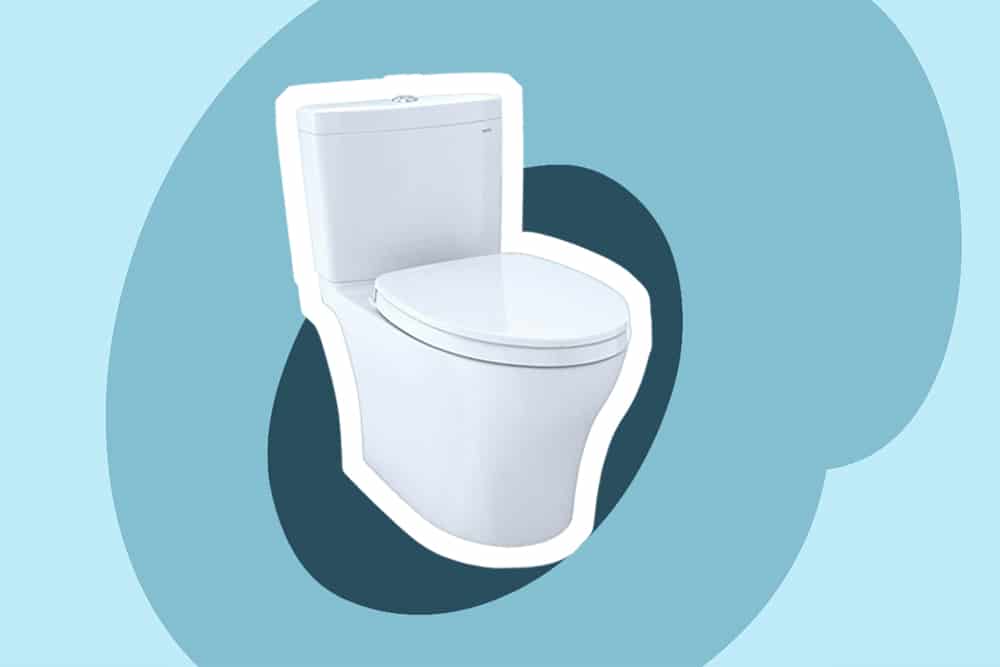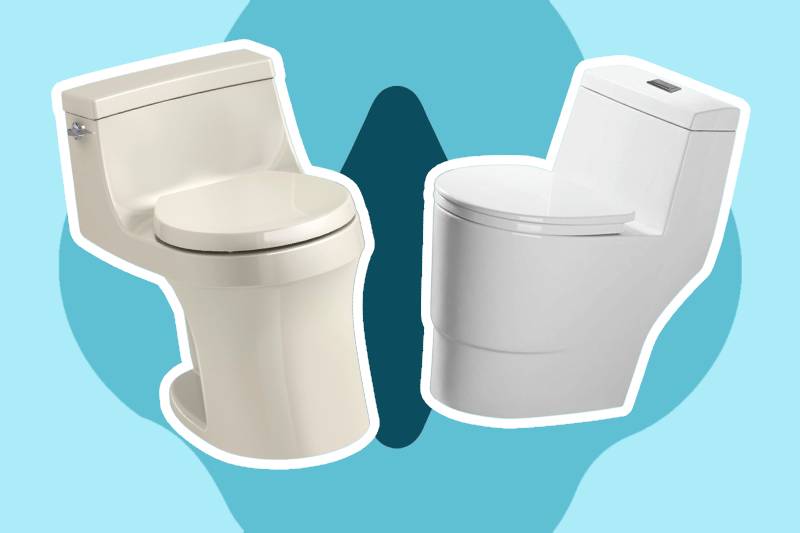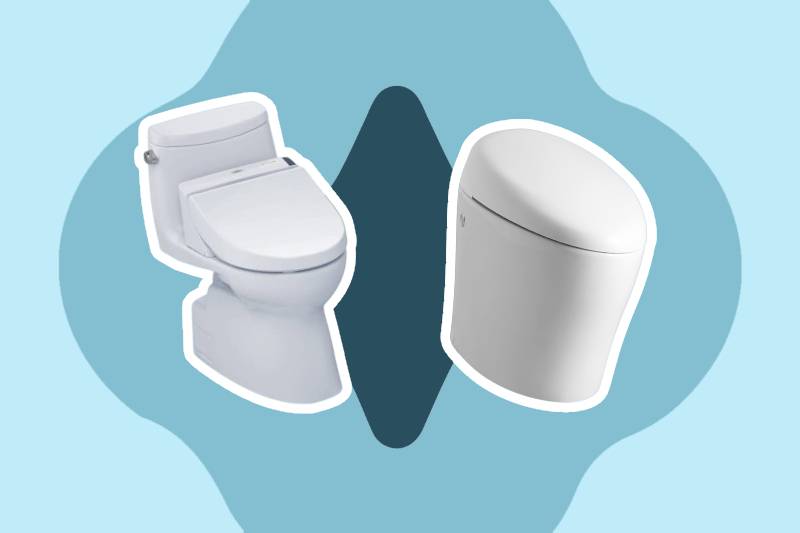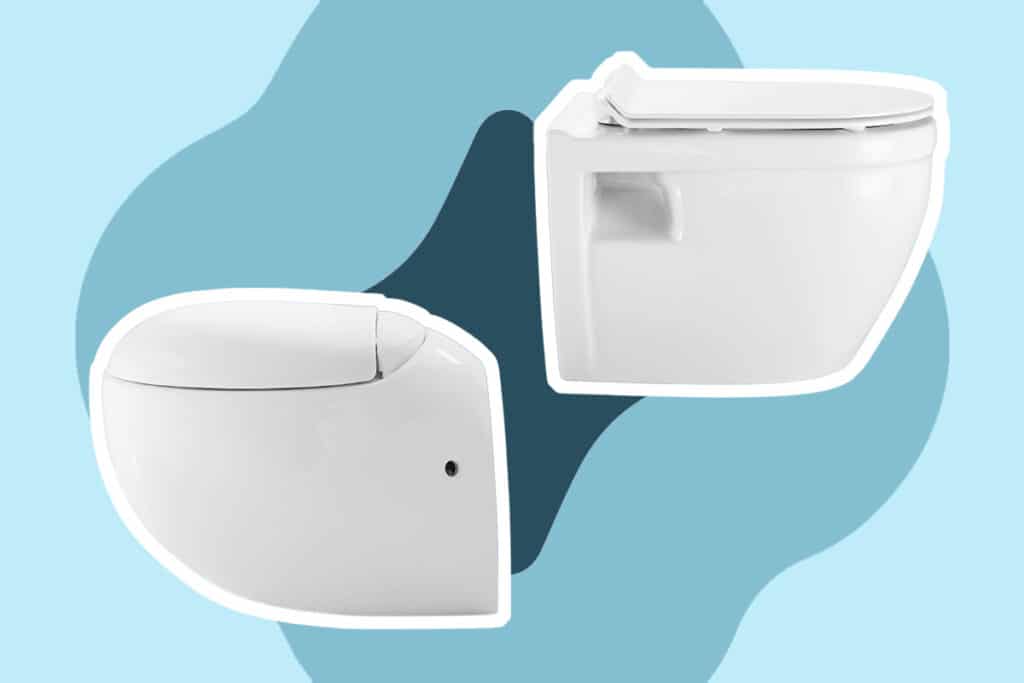

All toilets, be it one-piece, two-piece, or the smart models come with a setup that ensures they flush properly, prevent clogging, and entry of sewer gases that cause odor in the home. Your toilet’s venting mechanism is based on the nature of liquids and gases. A proper venting mechanism provides a balance of pressure between the gases and the waste matter, allowing the waste matter to flow to the drain and the gases to escape.
Venting a toilet is a necessity, otherwise you will have an unbearable stench in your home. Without a vent a toilet is literally a closed system. But what happens if your vent blocks or you move into a rental with a ventless toilet? Yes! Ventless toilets are increasingly gaining notoriety. This article has all the information on how to vent a toilet without a vent.
The pool of water at the base of your toilet bowl plays the crucial role of sealing the drainage system so that awful smelling gases don’t flow into the house. The gases must be released to avoid clogging the toilet’s system and that’s how venting comes in. Here is why your toilet needs venting:
Proper venting releases water into your toilet bowl at a very high pressure. The water forces its way into the drain past the p-trap. This process is hampered if there is any obstruction in the drain. Obstruction could be a clog which may delay flushing, or lack of venting which may cause a large bubble flowing out of the bowl as the waste flows down to the drain.
When not in use, your toilet should be still without any bubbles or running water. Air bubbles in your toilet tank are a telltale sign of poor venting. The bubbles are just air that forces itself back into the bowl when it lacks a way to escape to the outside.
As mentioned above, the water in your toilet’s bowl plays a critical role of preventing sewer gases from the drainage to flow into your home. It should always be at a constant level at the bottom of the P-trap. Poor venting causes air to build up under the P-trap which in turn pushes or sucks water in the bowl.
In a nutshell, you can tell if your toilet has poor venting if it doesn’t flush properly, has bubbles in the bowl, or the water in the bowl rises and falls.
There are many different ways of venting a toilet and certain aspects come into play like the size of the pipes, the design of the toilet, and the regulations Trusted Source AAVs in the UPC? | 2003-11-07 | Plumbing & Mechanical Proponents of air admittance valves want them added to the UPC code, but they face resistance from those who remain unconvinced. A recent survey among readers of PM Engineer magazine revealed that 74 percent would consider the use of AAVs for venting systems, while 52 percent said they would use AAVs anywhere the code would allow. www.pmmag.com set in your area by the Uniform Plumbing code (UPC), and the international plumbing code (IPC).
Don’t beat up yourself on the off-chance that you have moved into a rental that doesn’t have a toilet vent. You can vent your toilet without a vent using an air admittance valve, also known as a cheater vent. Rumor has it that AAVs are inconsistent and illicit, but you have to give it a fair shot before giving it a thumbs down. Ventless toilets have grown in popularity as it is difficult to set up standard venting.
AAV is a simpler mechanism that has similar impact with the old venting pipes system. They are very common in the US, Europe and other parts of the world. There aren’t any regulations that are against setting them up so far.
Here are the most common ways of venting a toilet:
Most toilets are built with the drain pipe running for a short distance before it drops towards the sewer in a vertical manner. A vertical vent is then extended from this point upwards and into the roof for it to have an open end. A sanitary tee makes the waste connection and its sweep is directed towards the sewer. The vent pipe is then glued to the port that would be facing upwards.
This venting option entails installing a vent to the vertical part of the waste pipe before the long-sweep elbow with a reducing wye. The wye’s sweep points downwards with the elbows being used to change the direction of the vent pipe as required.
You can also vent a toilet by installing a wye into the horizontal part of the drain line with the sweep pointing towards the sewer. You have to glue a 45-degree elbow into the wye outlet before venting it vertically into the wall behind the toilet or just any wall close to the toilet.
This is a popular method because it saves on time and space. It uses pipes with both water and air. In most cases, a sink drain is used. It is connected to the toilet water line with a reducing sanitary tee. The sweep of the sanitary tee should be towards the flow of the water and its outlet should face upwards. For the best results, the tee’s outlet ought to be perpendicular to the drain pipe.
Air Admittance valve, aka cheater valve is a toilet venting mechanism that allows air to get inside the toilet’s drainage system and prevent awful odor from coming into the home. The valves respond to pressure in the drainage system. Even with the lowest pressure in the drainage system the seal in the valve will open and lift to allow air from outside to enter and balance the pressure.
Once the pressure is balanced the valve’s seal is pulled back to its position by gravity then it closes on its own. With the valve’s seal closed, bad odor is trapped in the sewer system.
AAVs come in different sizes and shapes. They are also made with different materials and hues in different designs. Their designs aren’t sophisticated. They all come with a little mechanism tool on the top which is very straightforward.
Plastic is the most common material used to make AAVs. Some units even include a screen for keeping bugs outside and only allowing air to flow in and out of the vent.
Your toilet drainage system determines the size of valve you get. You should be able to gauge how much liquid waste it discharges every second and also its pressure potential.
Drainage systems have different sizes but the standard size is 3 or 4 inches. For any drain with a standard size, you should get a vent pipe that measures anything between 119 US GPM (7.5I/s) at-250Pa for small scale valves and 507 US GPM (32I/s) at-250 Pa for maxi valves.
Most valves are built to work at a wide range of temperatures between -4 degrees F and 140 degrees F. Different models have different temperature tolerance levels.
Installing an AAV is a breeze regardless of the model you buy. Its small size makes it easy to install just about anywhere in the home. Plus, manufacturers provide clear installation guidelines. You can put it in the bathroom, kitchen sink, basement, or above the isolation in the attic. Most people prefer to install their AAV at the toilet drain.
Before you begin the project, ensure you have the right tools and materials for the job. Here are some of the essentials you will need:
The first thing you need to do after you have picked a suitable location is to locate the drain pipe. You can start looking at the floor beneath the toilet then trace it along until you find the 4-inch or 3-inch main drain line pipe. You may have to lift floor coverings and floorboards.
The next step after locating the main drain pipe is sawing it. Use a marker pen to draw where you intend to cut for accuracy. Grab the PVC saw and cut through the drain line about 4 inches right before the pipe connects to the drain stack. If you feel stuck, you can consult your local plumbing codes to determine how far to locate the vent from the toilet.
Next, get a tee sanitary connection pipe with an adaptor. It is a crucial part of the installation. Set it up in an upright manner or 15 degrees to the vertical plane. If you lack the space to install the tee sanitary pipe vertically, use the miter saw to cut an angle that isn’t more than 15 degrees.
Install the tee sanitary pipe at the area you have cut by sliding the two ends you have cut into the opposite ends of the fitting. Push the AAV onto the other inlet on the fitting, then make adjustments by twisting it clockwise or anti-clockwise to prevent any obstructions caused by the valve.
Connect the left and right parts of the sanitary pipe with the sewer pipe and then position the disconnected pipe to the ceiling. You can use Teflon tape to get tight fittings for all your connections. For neat edges on the cuts and holes you have made, use the deburring tool. It will also enhance snug fitting of the pipes.
After you have fit the pipes and positioned the valve correctly, remove them and coat each of their ends with pipe cement. Reassemble the fittings and place them in the right order as before. Let the adhesive dry for a couple of hours.
If you don’t have pipe cement, you can use glue. Spray adhesive, in particular, is quite effective and dries up pretty fast. You may even finish the job faster.
Many people have doubts and concerns about AAV. Industry experts concur that it is the most reliable way of venting a toilet without a vent. The primary concern usually is whether waste from the sewer can come out of the AAV in case of clogging inside the drain pipes. Practically, it is impossible and there’ve been numerous tests for leakages and over-flooding.
AAV is a modern plumbing system that has been proven to be a high-quality, safe, and sound solution that can work without a mess or leaking.
Here is a quick rundown of the pros of choosing to vent your toilet with AAV:
Cheaper
AAVs reduce the amount of materials needed in a plumbing system which allows you to keep some pocket change.
Flexible
AAVs allow better flexibility in the layout of plumbing fixtures compared to other venting options.
Reduces roof maintenance
Many other venting options will require you to bore a hole on the roof which means extra roof maintenance. An AAV eliminates the burden of long-term roof maintenance.
Quick Tip: You will know that the AAV has disappointed you if you detect a sewer odor under your sink, or around in the attic.
The consequences of insufficient toilet ventilation are dire. Foul odors will seep back into your home and no amount of air fresheners will save you from the wrath. You don’t have to break the bank trying to fix your ventless toilet when there are simpler and easier venting solutions like AAV.
AAV is a modern plumbing gadget that sounds very unrealistic to many but works just as well as the traditional toilet venting systems Trusted Source Methods of Venting Plumbing Fixtures and Traps in the 2018 IPC Chapter 9 of the International Plumbing Code ® (IPC®) describes a variety of methods to vent plumbing fixtures and traps. wabo.memberclicks.net . It hasn’t gained much popularity like the traditional venting options because many people think it is too good to be true. Thanks to advancements in technology and basic science, AAVs are very simple to install and use. They are even cheaper because they don’t require as many materials for installation as other venting options. AAVs come in different sizes, shapes, designs and temperature tolerance levels. You can choose the brand you trust the most and a model with a generous warranty offer.
